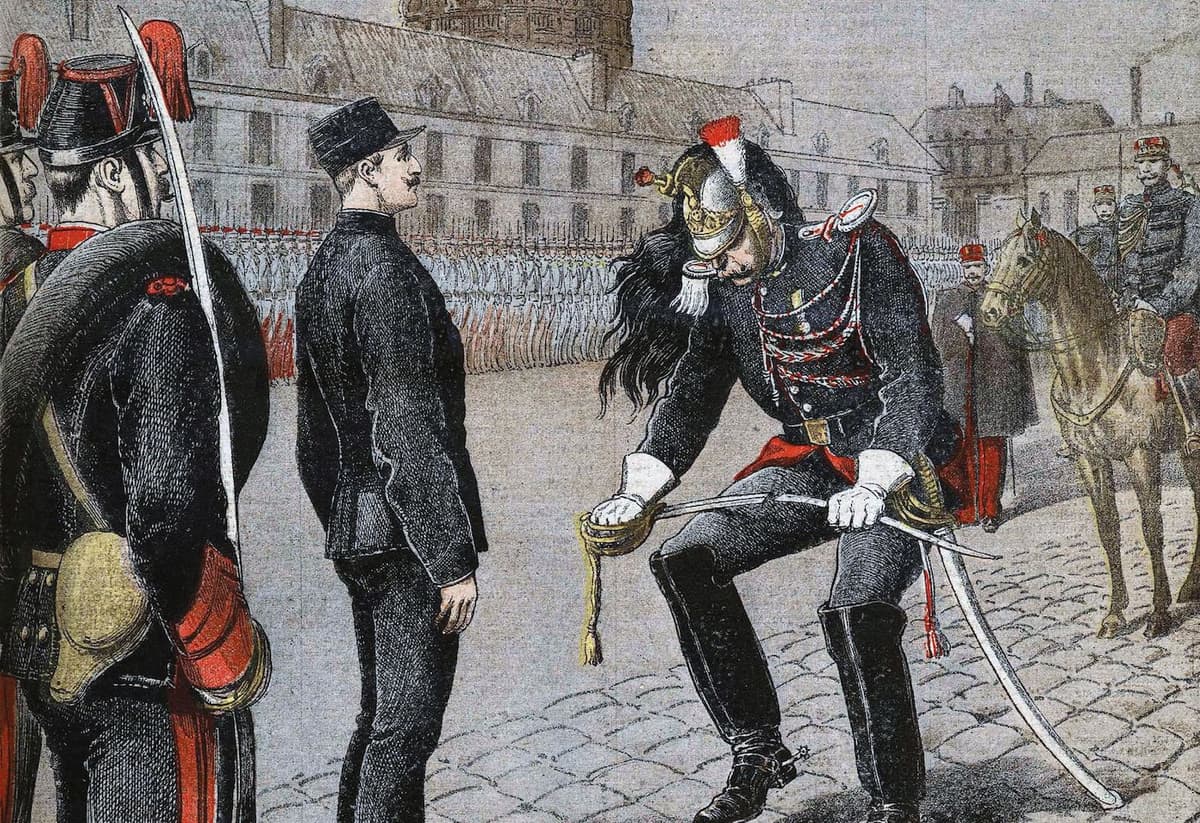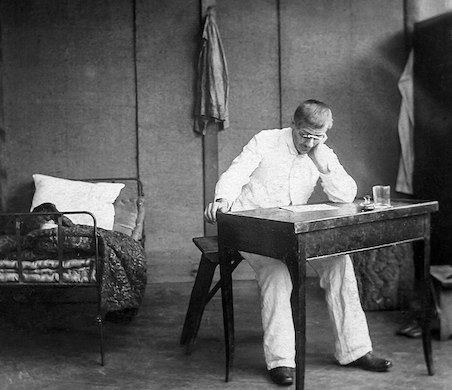General Dreyfus? Are You Serious?
The French enthusiasm for posthumous honors amounts to a form of American cancel culture in reverse.

Even as the Americans are sinking into the excesses of cancel culture, the French have been overindulging in belated posthumous honors. A classicist would speak of damnatio memoriae, or destroying the memory, and honor divinitatis serior, or belated divinity honors, respectively. However, there is more in common between them than meets the eye.
Cancel culture is about erasing the fame or memory of prominent historical figures whose behavior in their own time no longer corresponds to our present-day values or infatuations. Posthumous honors culture consists in awarding ceremonial distinctions, titles, or ranks to long-deceased individuals, whose deeds or words now seem to align with the prevailing Zeitgeist. One wonders which is more preposterous.
The promotion of Alfred Dreyfus to the rank of general nearly 140 years after the affair that bears his name and 90 years after his death — a recent decision of the Emmanuel Macron administration that was unanimously endorsed by the National Assembly — is a textbook case. An artillery captain of Jewish descent, Dreyfus was charged of high treason on falsified evidence in 1894 and sentenced to life imprisonment in French Guyana.
A passionate public opinion campaign led to a retrial and eventually to a presidential pardon. Dreyfus was reinstated in his rank and then promoted to colonel. Whether there is something to gain by turning him into a general now, either for his remote heirs or for the French community or France as a nation, is highly debatable.
Until recently, the most prestigious way to bestow posthumous honors on French personalities was to bury or rather re-bury them at the Pantheon, the deconsecrated church now dedicated to Republican heroes. While many of these “Great Men and Women,” as they are known, were interred there right upon their death, or just a few years later, some others were entombed decades later or even more.
The ashes of de Gaulle’s deputy in the French Resistance, Jean Moulin, were transferred in 1964, 21 years after his death under torture at the hands of the Germans. A French colonial governor of Black Caribbean descent, Felix Eboué, who sided with de Gaulle in 1940, was interred only five years after his death, in 1949, but the statesman who was instrumental in the abolition of colonial slavery one century earlier, Victor Schoelcher, was entombed along with him more than 50 years after his own passing.

Even more strikingly, the author of “The Three Musketeers” and “The Count of Monte Cristo,” Alexandre Dumas, was put to his final rest at the Pantheon in 2002, one hundred and thirty-two years after his death, not so much for his undisputable literary achievements than on account of his partly African origins. Likewise, the remains of three scientists born in the 18th century, the Marquis of Condorcet, Henri Grégoire, and Gaspard Monge, were committed to the Latin Quarter’s vaults in 1989, almost two hundred years after being deceased.
Like François Mitterrand, who paid a visit to the Pantheon on the day he was inaugurated as president in 1981 and reburied there seven persons throughout his two terms, Emmanuel Macron seems to like these ideologically motivated reinterments. Albeit with a twist: he tends to honor both a personality and a particular community.
There were three such ceremonies during Monsieur Macron’s first term, between 2017 and 2022 : for a Holocaust survivor, Simone Veil, best known for having made abortion legal as a minister of Health, and for her husband Antoine, in 2018 ; for a great writer and a Resistance activist, Maurice Genevoix, in 2020 ; for the American-born singer and dancer, Josephine Baker, a Resistance activist, in 2021. A further reinterment of Missak Manoukian, an Armenian-born Resistance fighter executed by the Germans, and his wife, occurred in 2024, in the present second term.
Post-mortem military promotions are another French tradition. Whereas five World War I generals — Joseph Joffre, Ferdinand Foch, Philippe Pétain, Hubert Liautey and Louis Franchet d’Esperey — were made marshals of France when alive, from 1916 to 1921, two more were raised posthumously to that dignity: Joseph Gallieni in 1921 and Michel-Joseph Maunoury in 1923.
Likewise, three World War II generals were made marshals in 1952: Alphonse Juin was still alive but Philippe Leclerc had been killed in a plane crash in 1947, and Jean de Lattre de Tassigny had just passed away.
As for the no less gallant Jean Koenig, he was made marshal posthumously in 1984 by Mitterrand, 39 years after World War II had ended and 14 years after his death. One reason why he had been by-passed in 1952 was probably that he was then politically active, as one of the Gaullist party’s leaders, soon to become minister of defense.

Koenig’s much belated elevation created a precedent. The populist-conservative leader, Marine Le Pen, has suggested that general Edouard de Castelnau, arguably the best French commander in World War I, should, too, be made marshal of France, 80 years after his death. It is an open secret that during the war’s aftermath the political establishment saw him as a threat — as both a popular general and a devoted Catholic — and thus barred him from the ultimate honors. What may work for Madame Le Pen’s proposal is Castelnau’s firm stand, from 1940 on, against Pétain’s Vichy regime.
To raise colonel Dreyfus to the rank of general posthumously after a century is, however, a very different matter. Some say that Monsieur Macron had in mind initially to transfer his remains to the Pantheon, only to realize that an unwritten law commits the former church to civilians only. Hence, as a second option, a military rank promotion. Yet is it not like opening an inflationary Pandora’s box? There are literally hundreds of worthy colonels or captains who fought on the home fronts or overseas and who might be promoted posthumously as well…
Moreover, the political implications are all too evident. While Dreyfus himself was, like most French Jews in his time, a conservative patriot, the campaign to rehabilitate him was quickly weaponized by the left in French politics, and has remained, for over one century, a paramount symbol of the left’s self-righteousness and legitimacy. However, this might be over, at a time when large parts of the French left are shifting to antisemitism from anti-Zionism, and when Monsieur Macron, a man stemming from the left, promises to “punish” Israel for alleged crimes in Gaza — a libel not unlike, mutatis mutandis, the charges against Dreyfus in 1894. Hence the half-baroque, half-cynical attempt to buy Dreyfus back. With three posthumous stars.

